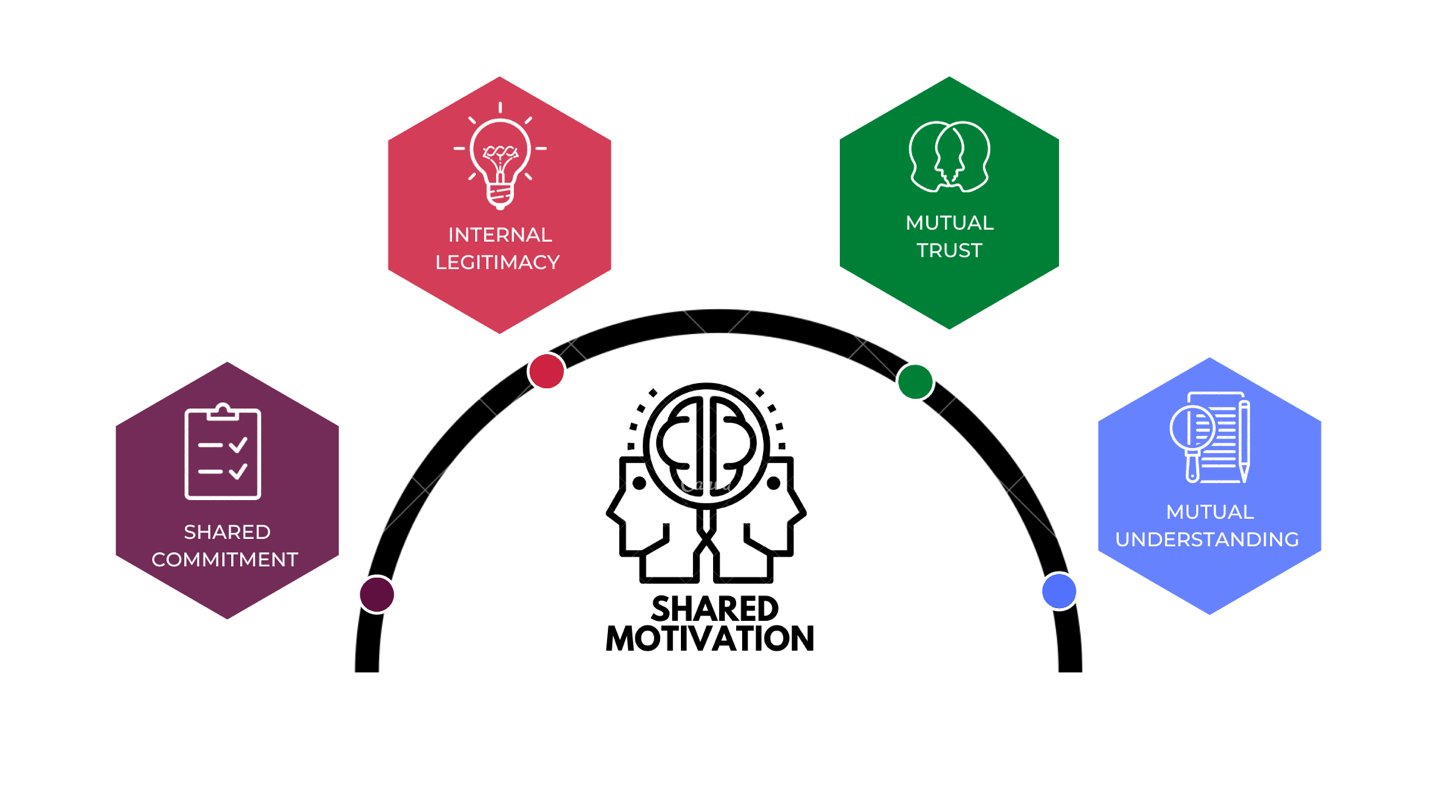Home » Shared Motivation
Introduction to Collaborative Governance
Shared Motivation

Shared motivation is a self-reinforcing cycle consisting of four components: mutual trust, understanding, internal legitimacy, and commitment. It stresses the interpersonal and relational elements of the collaborative dynamics, which is often referred to as social capital.
The first element of shared motivation is the development of trust. When parties start working together, they may gradually develop trust among each other. This enhances the predictability and dependability of the collaboration (Fisher & Brown, 1989).
More importantly, this forms the basis of mutual understanding, the second element in shared motivation. It enables people to reveal themselves to others and hence be understood and appreciated by them.
In turn, mutual understanding generates a sense of interpersonal validation and cognitive legitimacy (the third element). The collective endeavour confirms that actors are trustworthy and creditable with each other, though having different yet compatible interests. This legitimizes and motivates the ongoing collaboration.
Finally, the creation of shared commitment (the fourth element) enables actors to cross organizational, sectoral, and/or jurisdictional boundaries that previously separated them and commit to a shared path.
References:
Fisher, R., & Brown, S. (1989). Getting together: Building relationships as we negotiate. Penguin.
Continue to “Capacity for Joint Action”
© 2022 Centre for Civil Society and Governance at The University of Hong Kong
Except where otherwise noted, contents of this e-study is licensed under a Creative Commons Attribution-NonCommercial-ShareAlike 4.0 License.
![]()


